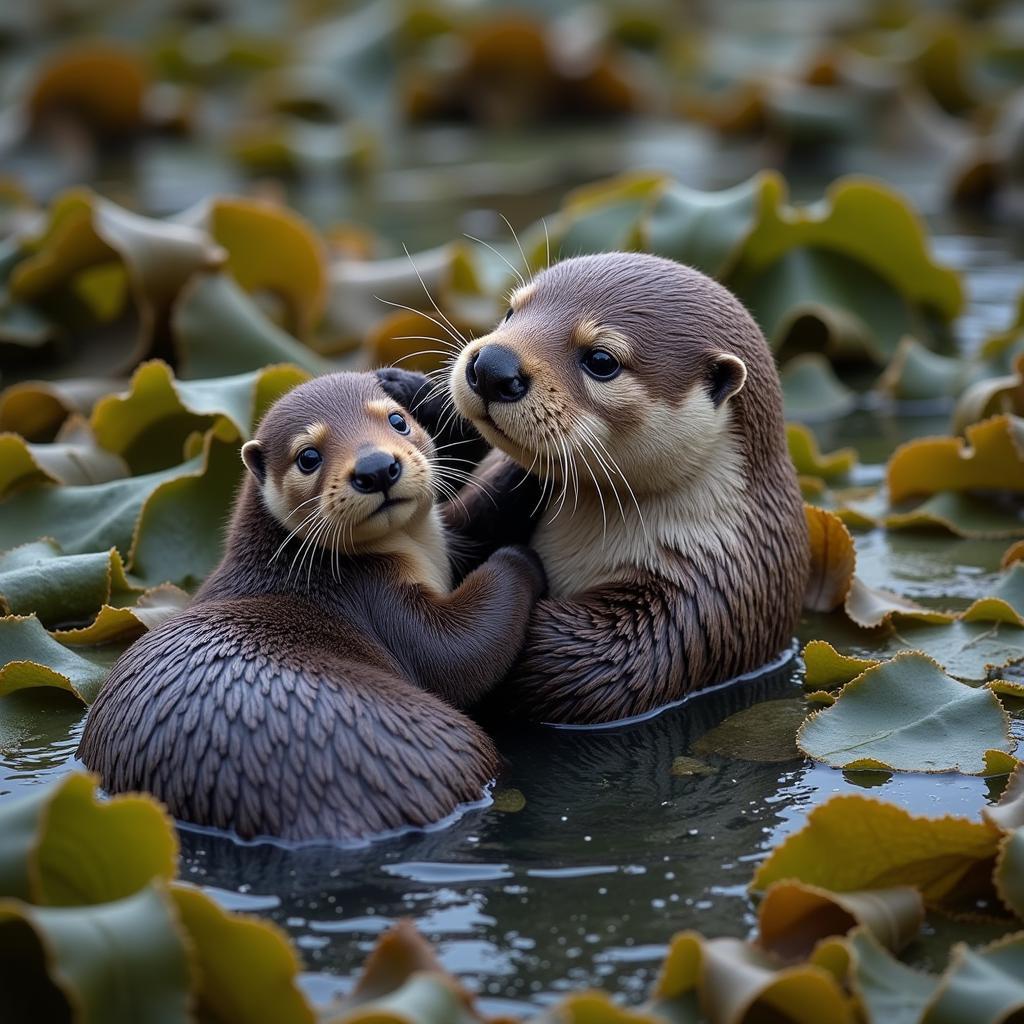When we think of clean animals, our minds might wander to cats meticulously grooming themselves or dogs getting a bath. But did you know that the ocean holds a creature known for its cleanliness? It’s not a dolphin or a seal, but the sea otter. These adorable, furry creatures are surprisingly hygienic for animals that spend their entire lives in water.
Why So Clean?
Sea otters have the densest fur of any mammal, with up to a million hairs per square inch. This incredibly dense coat is vital for their survival in cold Pacific waters as it traps a layer of air close to their skin, providing exceptional insulation. However, this amazing adaptation comes with a catch – it requires constant maintenance.
To keep their fur in top condition, sea otters dedicate a significant portion of their day to grooming. They meticulously clean their fur, removing dirt, debris, and excess water. This meticulous grooming serves several crucial purposes:
- Maintaining Insulation: Clean fur traps air more effectively, ensuring optimal insulation in frigid water temperatures.
- Preventing Hypothermia: By keeping their fur clean and dry, sea otters prevent cold water from directly contacting their skin, reducing the risk of hypothermia.
- Promoting Healthy Skin: Regular grooming removes parasites and prevents skin infections, maintaining overall health.
 Sea Otter Family Grooming
Sea Otter Family Grooming
Grooming Techniques: A Closer Look
Sea otters employ fascinating techniques to maintain their pristine fur:
- Air Bubbles: They blow air into their fur while grooming, creating tiny bubbles that dislodge dirt and debris.
- Rubbing and Rolling: Sea otters often rub their bodies against rocks or kelp, utilizing their surroundings for a thorough clean.
- Specialized Paws: Their paws are equipped with retractable claws and sensitive pads, perfect for combing and fluffing their dense fur.
Beyond Cleanliness: The Ecological Impact
The grooming habits of sea otters have a ripple effect on their environment. As they clean their fur, they consume small creatures like crabs and snails that can harm kelp forests. These kelp forests are crucial ecosystems, providing habitat and food for various marine species. By keeping their fur clean and healthy, sea otters indirectly contribute to the health of these vital ecosystems.
Frequently Asked Questions About Sea Otter Grooming
1. How much time do sea otters spend grooming each day?
Sea otters dedicate a considerable amount of time to grooming, spending several hours each day cleaning and maintaining their fur.
2. Do all sea otter species have the same grooming habits?
Yes, all three subspecies of sea otters – Russian, Alaskan, and Californian – share similar grooming habits due to their reliance on dense fur for survival.
3. Can anything disrupt a sea otter’s grooming routine?
Factors like oil spills or pollution can severely impact a sea otter’s ability to keep its fur clean, leading to health issues and even death.
4. How can I help protect sea otters and their habitats?
Supporting organizations dedicated to ocean conservation, reducing plastic use, and making responsible seafood choices are great ways to contribute.
Need More Information on ASEAN’s Diverse Wildlife?
Contact us at Phone Number: 0369020373, Email: [email protected] or visit us at Thôn Ngọc Liễn, Hiệp Hòa, Bắc Giang, Việt Nam. Our dedicated team is available 24/7 to assist you.
